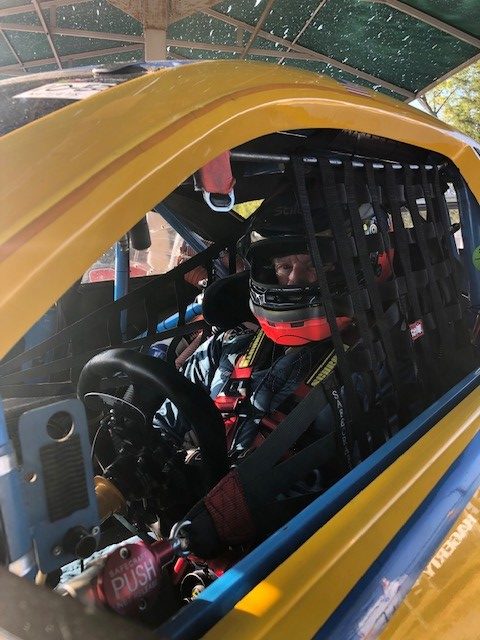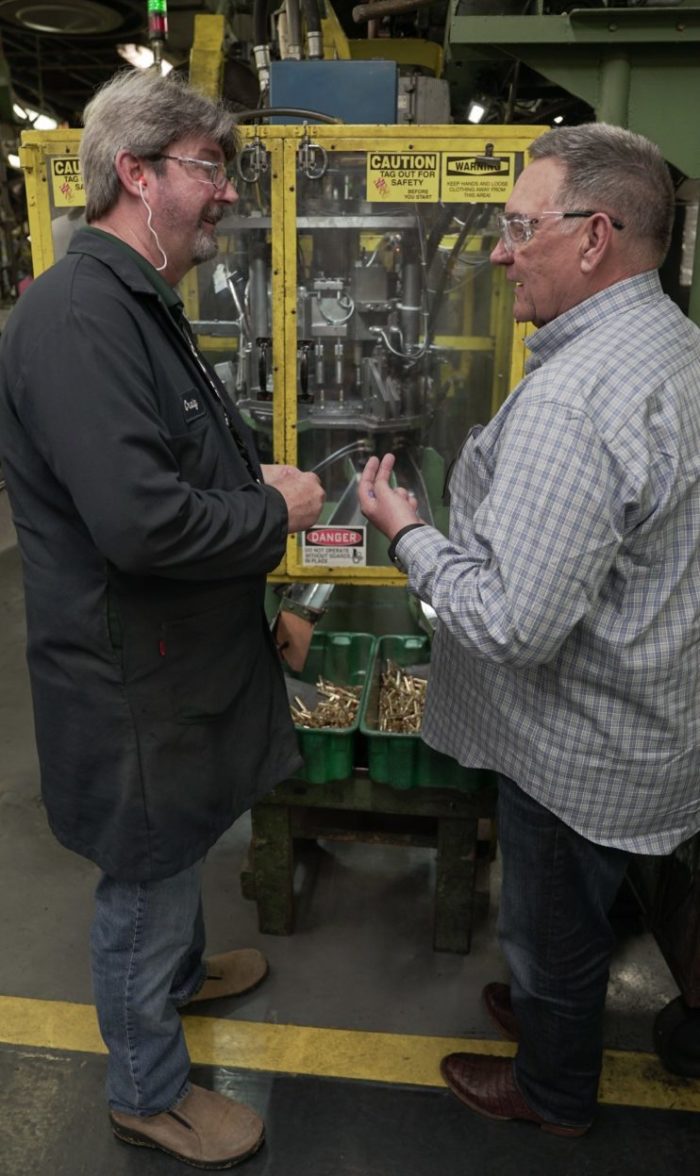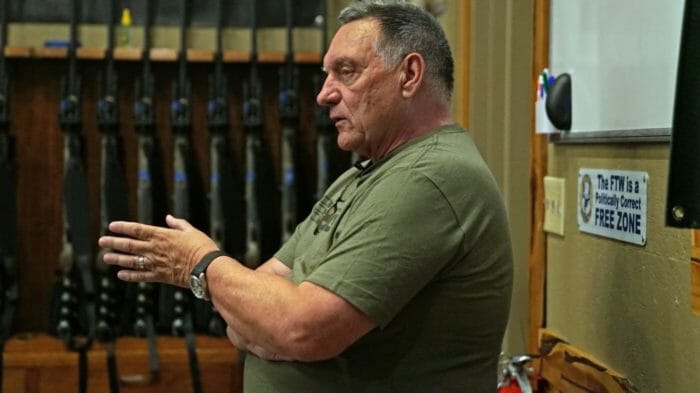A Deep Dive into Remington’s New CEO
Driving 200 mph around a road race track at 3 a.m. might sound like an adrenaline-inducing experience, but for Ken D’Arcy, CEO of Remington Outdoor Company, this is where he finds peace.
“If you can take your mind away from the day-to-day business and the multiple issues, opportunities, and problems, then it puts you in a much better frame of mind,” D’Arcy said.
International Sportsman sat down with D’Arcy at the Dallas Safari Club Convention (DSC) to discuss the drives and passions that make up the CEO of America’s oldest gun company. The DSC Convention is a gathering of some of the most influential companies in the hunting and shooting sports industry. D’Arcy is a strong advocate for conservation and field-to-plate organic meat, values that are shared with DSC.
Growing Up
Growing up in an oil and farming family in Banff, Alberta, Canada, D’Arcy often went shooting and hunting with his family. His interest in shooting waned as he entered adulthood and launched full-bore into his career. It was about 20 years ago he got serious about shooting again.
“What got me back into the shooting sports was my family,” D’Arcy said.
He had just moved to Denver from France after selling Bollé, a France-based eyewear company, when the opportunity to shoot again presented itself.
“We were on vacation in Idaho, and my wife and daughter were attending a figure skating camp, so I asked my son what he wanted to do. He was about ten years old at the time and asked if we could go to the shooting range,” D’Arcy said.
At the range, D’Arcy tried trap and skeet and found he enjoyed skeet far more than trap.
“I’m an all-or-nothing kind of guy. If I’m going to do something, then I want to be good at it. If I can’t be good at it then I’m not going to do it,” D’Arcy said
He decided that if he was going to take up shooting sports, he was going to be the best he could be. D’Arcy sought advice from several people who hunt but eventually found a shooting coach who helped him hone his skill.
“I was shooting skeet at a world-class level and averaging a 99.8 with a 12-gauge when I quit competing,” he said.
This commitment to being the best extends beyond the shooting range. His drive to be the best is on display at the racetrack as well.
“I was invited to join a racing group of elite drivers, As the introduction of the “new” guys was taking place, each of the new drivers were asked to give a little background. As they went around the room people were saying how long they had driven at the track, when it was my turn, I said, ‘Well, I have 105 days in.’ they asked, ‘How long?’ and I said that was last year.”
Surrounding himself with experts and expecting excellence from himself are keys to his high-caliber performance.
“If you want to be good at something, you must learn from experts, and you must practice. That is the only way you get good,” he said. “The less you practice, the less competent you are. You also must have an open mind—just because you do something this way doesn’t mean there isn’t another way to do it, too.”
A look at D’Arcy’s career shows this strategy has worked out well. While CEO and President at Crosman Corporation, a manufacturer of air rifles, D’Arcy navigated the company out of financial trouble and through four separate acquisitions. Crosman is now known as an innovator within their industry, and during his 10-year tenure, the company released more new products than in the 78 years prior.
As president of Bollé, D’Arcy moved the 130-year-old company to private ownership and increased revenue during a period when France was dealing with labor union issues.
More recently, D’Arcy served as President and CEO of Tracking Point, an Austin, Texas-based company that creates cutting edge optics for rifles, as well as CEO of G.I. SPORTZ, a paintball company, known for lines such as Tippmann and Spyder.
“I feel there is only one place to be, and that is first place,” D’Arcy said. How does he determine what first place is?
“The very first long car race I did was a six-hour endurance race. You do those with a partner, and we came in third overall and second in our class, which is pretty darn good for our first race,” D’Arcy said. “I got out of the car, and my co-driver is hugging me, and I said, ‘Hey, Pete! We are first losers!’ He said, ‘That is why I love you. I feel the same way!’”
A Culture Shift
With Remington, D’Arcy is putting drive for excellence behind a company that is made of many brands.
“Remington has had a huge challenge,” he said. “The challenge has been that they went from being this iconic brand that has been around for 205 years to acquiring DPMS, Bushmaster, etc. and these companies didn’t have the same culture. They came from completely different areas of the industry.”
Since there are so many brands under the Remington banner, that culture alignment is paramount to turning Big Green around.
“When you look at a culture change part of it is practice what you preach. I work from morning ‘til night, and everyone in the office knows that” D’Arcy said. “I was at the office in Huntsville, and our VP of Sales was on his way out at 6:30 p.m., and he said, “I have never seen a CEO in at this time.’ If you want to lead, then lead by example. Go to work and do your time.”
One of D’Arcy’s turnaround methods is to walk around and connect with employees and observe the systems at work.
“Crosman was a small company that had the same issues as Remington,” D’Arcy said. “Their quality wasn’t as good as it should have been, and their service wasn’t as good as it should have been.”
While at Crosman, he would tour the exterior of the building every two weeks. On one of these tours, he found materials that didn’t belong there and discussed this with the VP of Manufacturing. From that day forward the VP took it upon himself to have the same walk around. D’Arcy manages by walking around and engaging in conversations with employees. He’s also very observant and brings issues to the attention of the appropriate supervisor or VP. “The worst thing you can do is let me find something you don’t know about,” D’Arcy said.
In recent years, Remington developed a reputation for hit-or-miss quality. D’Arcy didn’t shy away from this.
“In the past, Remington has made some mistakes and produced poor quality products. That is being fixed,” he said.
Getting Back to Their Roots
Remington has ridden the MSR (Modern Sporting Rifle) wave, but with profits drying up, a new direction is necessary.
“I think the whole industry needs a makeover,” D’Arcy said. “If we are going to survive and grow, there needs to be something new.”
His focus is on getting back to the roots of what made Remington successful in the first place: the tradition of family and hunting in America.
“In my family, we eat wild game all the time. My son loves to cook, and he asked if he could learn to shoot so he could hunt for the meat himself,” D’Arcy said.
He planned a trip for the two of them to FTW Ranch, a 12,000-acre ranch in southwest Texas, for a shooting class and hunt. For three weeks leading up to the hunt, all his son could talk about was this going somewhere to spend a few days with his dad.
“That was the important part — not the shooting, not the hunting, but having some quality time with his old man,” D’Arcy said. “If most of us think back to what got us into the shooting sports, it is family and community.”
The history of hunting and shooting sports is the history of Remington, too, D’Arcy notes.
“Whether it is father and son, or father and daughter, it’s a time they are outside the house doing something fun that is a common interest. Your children will talk a lot more in the blind than they’ll do around the kitchen table,” D’Arcy said.
A Change in Marketing
As for how the industry, hunters, and shooting enthusiasts are perceived, D’Arcy says there is an opportunity to provide fresh understanding to those on the outside looking in.
“I think some terms in the firearm industry are antiquated. For example, the phrase ‘trophy hunting.’ I believe this is the worst name anyone has come up with,” he said. “What happens with the non-hunters is they think that people are just chopping the head off an animal and going on to the next. The reality is, there is not an animal out there that the meat is not used. Yet, the non-hunters think hunters just kill animals for sport.”
The reality is the overwhelming majority of conservation dollars are from hunters and firearm sales.
The entire shooting sports industry is looking at what needs to be done to inspire the next generation to take up shooting sports. D’Arcy said that today’s hunters and shooters do not resonate with the traditional marketing of the industry.
D’Arcy recently went on a Sandhill crane hunt and shared with us a picture of how he prepared his steaks. Sandhill cranes are often referred to as the “ribeye of the sky.”
“It is some of the best meat,” he said. “There is nothing better and healthier than organic wild game meat.”
“I don’t think taking a gun and holding it up and saying, “Look at this!” is a beneficial marketing approach,” he said. “At Remington, we hang our hats on our heritage and our values as a company. We focus on doing things that will draw in new generations of hunters. One is to talk about family; the other that is really critical is field-to-table.”
For D’Arcy, the wild cuisine doesn’t stop with the Sandhill crane. In the past year, he shot three axis deer on the FTW Ranch, which is known not only for its choice hunting but also for the world-class training that is offered there.
This field-to-table approach is a driving force for the millennial generation of hunters. As the younger cohort looks for healthier and more sustainable food sources, hunting seems like a natural fit.
“We need to take advantage of the field-to-table movement as a group and do better than what has been done before,” D’Arcy said. “You talk about conservation. There is no doubt that hunters are the greatest conservationists. However, you talk to a non-hunter, and they don’t understand how killing something is saving it. We need to talk about habitat. Ducks Unlimited has done a fabulous job with their habitat initiatives. I think these are vital initiatives, and Remington will be involved in these efforts within the next year.”
Remington is also focusing on engaging more directly with its customers. D’Arcy believes in being engaged with the consumer on social media and reads the comments on Remington’s pages.
“For a company like Remington, I need to understand why people follow us, what draws them to us,” he said.
Remington customers can expect more interaction in the new year, as well as higher-quality content on all of its social media channels.
“When Remington came out of bankruptcy, I went to the site, and there was someone giving shooting tips in a video, and I was horrified at the lack of quality,” he said. “That is changing. If we are going to do something, it is going to be the best.”
Market Leaders
The road map for Remington’s turnaround is summed up by their new mission statement:
“Be the world-class leader within the shooting sports industry through exceptional quality, innovation, and service.”
D’Arcy has some thoughts on innovation:
“There are a lot of new opportunities for innovation in the shooting sports world. Technology has got to be one of them. Light-weight triggers are not innovation. If we as an industry plan on getting the younger people, we better have technology,” he said.
When pressed if there were some projects in R&D, D’Arcy would only say, “Maybe, but we can’t talk about those now.”
In terms of the future of Remington, D’Arcy stressed that getting back to the company’s roots is essential.
“I want people to understand that Remington is going back to the basics of good product, innovation, and customer service,” he said. “It doesn’t happen overnight, but it is already happening and will continue to happen.”
Final Question
Jeremy Mallette is co-founder of International Sportsman. An avid hunter and outdoorsman, he has spent more than a decade in the outdoor industry, from hiking and camping to silencers and hunting. His father taught him to shoot at age six, and he received his first firearm at age eight — a 1942 Colt Commando .38 special revolver. He enjoys yearly trips to Kansas for pheasant hunting, spending time with his children at the deer lease, and collecting unique firearms.







